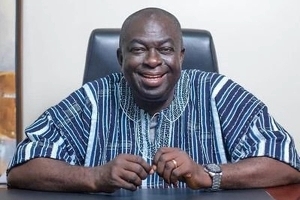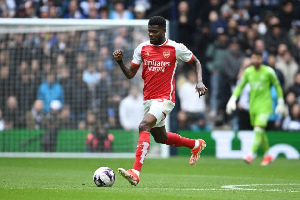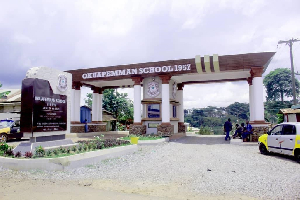Business News of Tuesday, 12 May 2009
Source: GNA
MPC maintains Prime Rate
Accra, May 12, GNA- The Monetary Policy Committee (MPC) has kept the prime rate unchanged at 18.5 per cent, citing the likely impact of the global financial crisis on trade and capital flows necessary to support economic activity.
The prime rate is the key indicator of the direction of interest rate charged by banks.
Addressing a press conference after the quarterly meeting of the Committee, Dr Paul Acquah, Chairman of the MPC, said the indicators of economic activity and demand growth, including imports seem to be slowing down from the rapid pace recorded in 2008. "Credit conditions are tighter. And, headline inflation though still high seem to be stabilising with reduced price volatility observed over the past few months, as has exchange rate volatility in the midst of sharp swings in international currencies," he said. Dr Acquah, who is also the Governor of the Bank of Ghana, said a rigorous implementation of the budget would provide the necessary basis for a more stable macroeconomic conditions and improved outlook for growth and inflation.
The 2009 budget focus is to reduce fiscal deficit from 14.9 per cent to 9.4 per cent in the first year.
Dr Acquah said provisional banking data on fiscal operations during the first quarter of 2009 indicated that domestic revenue growth continued to be strong even though at a slower pace than in the same period in 2008.
Similarly, expenditures were at relatively reduced pace. Total revenue and grants for the first quarter of 2009 amounted to GH¢1,308.1 million representing 6.1 percent of GDP, compared with GH¢1,129.2 million (6.4 percent of GDP) for the same period in 2008. In year on year terms, total revenue and grants increased by 15.8 percent, compared with 11.0 percent recorded in 2008. Grants amounted to GH¢244.3 million (1.1 percent of GDP) compared with GH¢225.5 million (1.3 percent of GDP) for the same period in 2008.
He said total expenditure (excluding foreign financed capital expenditure) for the first quarter of 2009 amounted to GH¢1,249.2 million (5.8 percent of GDP) compared with GH¢1,265.3 million (7.2 percent of GDP) for the same period in 2008.
Wages and salaries amounted to GH¢558.5 million (2.6 percent of GDP) compared with GH¢549.1 million (3.4 percent of GDP) for the same period in 2008.
Dr Acquah said the fiscal operations during the first quarter resulted in a deficit (excluding foreign financed capital expenditure) of GH¢194.7 million (0.9 percent of GDP) compared with a deficit of GH¢275.6 million (1.6 percent of GDP) for the same period in 2008. The deficit of GH¢194.7 million, in addition to a foreign loan repayment of GH¢48.7 million, was financed from domestic sources to the tune of GH¢243.4 million (1.1 percent of GDP), he said. The stock of domestic debt (gross), which stood at GH¢4,778.1 million (27.1 percent of GDP) at the end of 2008, increased to GH¢5,083.5 million (23.7 percent of GDP) at the end of March 2009. External debt stood at US$4,010.2 million at the end of March 2009 (25.5 percent of GDP), up from US$3,982.6 million (28.1 percent of GDP) at the end 2008.
This brings total public debt to US$7,742.4 million (49.2 percent of GDP), down from US$7,918.1 million (54.6 percent of GDP) in 2008. Dr Acquah said prices of Ghana's major export commodities were strong on the international market during the first quarter of 2009. The average realized price of cocoa beans exports increased by 17.8 percent in the first quarter of 2009 to US$2,794.92 per tonne. Similarly, the average export price of gold increased by 12.4 percent to US$912.37 per ounce in the first quarter of 2009.
Provisional estimates indicate that total merchandise exports during the first quarter of 2009 grew by 11.4 percent in year on year terms to US$1,465.0 million, compared with a growth of 26.3 percent for the same period in 2008.
Exports of cocoa beans and products amounted to US$553.3 million in the first quarter of 2009, compared with US$403.2 million for the same period in 2008 (an annual growth of 37.2 percent). Exports of cocoa beans and products in the first quarter 2008 registered an annual growth of 5.5 percent over a year earlier. Cumulative cocoa purchases for the 2008/2009 main crop season as at May 1, 2009 amounted to 595,015 tonnes (against a forecast of 600,000 tonnes for the entire crop season), compared with 598,419 tonnes for the same period in the 2007/2008 season.
Gold exports for the first quarter of 2009 was US$581.95 million compared with US$608.92 million over the corresponding period of 2008. In year on year terms, there was a 4.4 percent decline in the value of gold exports, reflecting 4.0 percent decline in the average price and 0.4 percent decline in volume.
Dr Acquah said non-traditional exports for the first quarter of 2009 amounted to US$241.28 million, compared with US$150.75 million for the same period in 2008, representing a growth of 60.1 percent. On the other hand, total merchandised imports for the first quarter of 2009 declined by 18.4 percent in year on year terms to US$2,017.0 million, compared with US$2,473.86 million (and an annual growth of 49.1 percent) for the same period of 2008.
Non-oil imports amounted to US$1,775.61 million and accounted for 88.0 percent of total imports during the first quarter of 2009. The level for the first quarter represents a decline of 3.0 percent over the same period in 2008. For the same period in 2008, non-oil imports grew by 39.3 percent.
Capital and intermediate goods accounted for 69.6 percent of total non-oil import bill for the first quarter of 2009, compared with 65 percent for the same period in 2008.
Oil import bill for the first quarter of 2009 was estimated at US$241.84 million, compared with US$643.86 million in the first quarter of 2008, a significant annual decline of 68.7 percent reflecting 50.8 percent decline in price and 36.5 percent fall in volume. Dr Acquah said this had resulted in a decline in the merchandise trade deficit from US$1,158.99 million in the first quarter of 2008 to US$552.45 million in the first quarter of 2009.
The current account (including official transfers) recorded a deficit of US$271.16 million, compared with a deficit of US$714.78 million for the same period in 2008.
The overall balance recorded a deficit of US$404.27 million during the first quarter of 2009, compared with a deficit of US$261.90 million for the same period in 2008, and was financed wholly by drawdown in reserves.
Gross international reserves position at the end of March 2009 was US$1,750.3 million and represents 1.5 months cover of imports of goods and services. This compares with US$2,036.22 million in December 2008 and US$2,226.89 million in March 2008.










